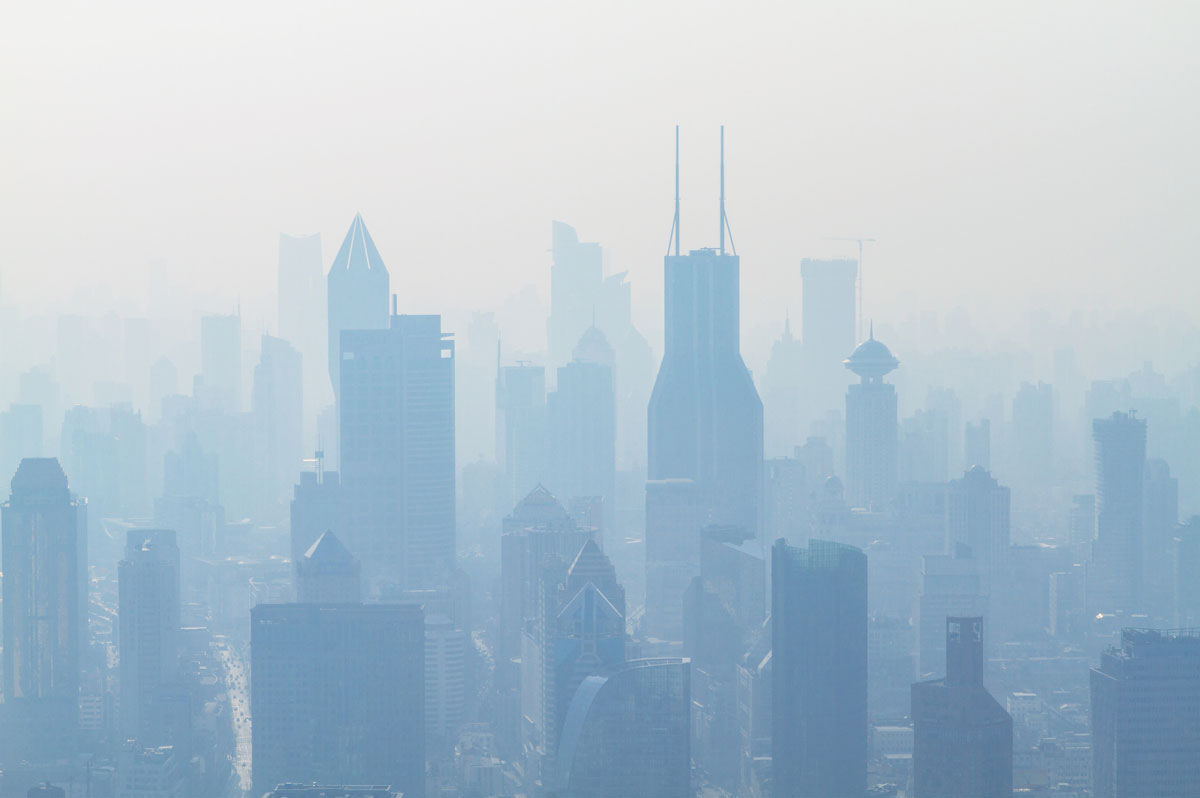Professor Paul Ekins and his team’s financial analyses for medical journal 'The Lancet' reveal the health benefits of getting tough on the causes of climate change.

A wild fire in Estreito da Calheta, Portugal. The number of wild fires every year is increasing globally. Credit: Michael Held for Unsplash
Today, The Lancet’s early start looks prescient. Its reports, meanwhile, now enjoy a thunderous reception. In November 2018, the third of its Lancet Countdown Reports generated 1,127 unique media stories, reaching 1.04 billion people around the world.
Professor Paul Ekins, Director of The Bartlett’s Institute for Sustainable Resources (ISR) and Senior Research Associate Paul Drummond, have been contributing to the Countdown Reports since 2015, with a chapter of economic and financial analysis – roughly a quarter of the whole.
Notwithstanding shocks like Paradise, Ekins says, the immediate connection between health and climate change still seems distant to many people. “The idea, for example, that widespread temperature increases will cause major infectious diseases to spread north into countries where people have little experience of them, appears relatively remote.”
Instead, the biggest health impacts related to climate change today arise from what causes it – the burning of fossil fuels – and it is here that Ekins and his team have concentrated their work.
“Local air pollution, caused mainly by the fossil fuel combustion, is the leading global cause of premature death,” he says. It raises, he explains the question of what economists like to call co-benefits. “If we could sort out climate change by moving away from fossil fuels then we go a long way towards solving the health problems associated with local air pollution.”

Shanghai, China, in heavy smog. Air pollution in China's cities has become a major issue for people's health. Credit: Holger Link for Unsplash
Ekins’ and Drummond’s work for The Lancet has concentrated on presenting indicators in two areas, showing both the progress of shifting from fossil fuels to alternative sources of energy and the wider economic implications of this shift.
“We have learned quite how wrong you can be about the costs of mitigating climate change if you fail adequately to account for innovation,” he says. Early cost estimates of a shift to a low- or no-carbon economy were much too large because no one appreciated that, when you start to install alternative energy sources at scale, the costs will shrink fast.
From cost burdens to opportunities
In at least 80 countries in the world, says Ekins, the cost of generating renewable energy is today comparable with producing electricity from fossil fuels. “In many countries, it is now cheaper to install and run new solar power stations than to keep existing coal plants running.”
Perceptions of the impact of the renewable energy revolution on the wider economy has also seen a paradigm change, with the narrative shifting from sharing the “burden” of the cost of the change, to talk of a “new industrial revolution” facilitated by innovation in alternative energy generation. “Now, nobody is talking about burdens; it is all about the economic opportunities of low-carbon technology,” says Ekins.
Some of these opportunities can be found in the rejuvenation of economic areas that once relied on fossil fuel industries. Ekins points to England’s industrial northeast. “With the decline of North Sea oil drilling everyone worried that these areas would become another collection of stranded post-industrial communities.” But just as idle shipbuilding yards went back to work building offshore oil rigs, now – as North Sea oil and gas production declines – the burgeoning offshore wind industry is picking up the capacity in jobs and physical infrastructure.

Moving away from fossil fuels could go a long way towards solving the health problems associated with local air pollution. Credit: Tam Wai for Unsplash
Focus on the essentials
The world consumes roughly 80bn tons of stuff per year. By 2060, on current trends, it will be ploughing its way through twice this quantity of raw materials. Even if we have enough to go round, and can work out how to get it from where it is – in the ground, mostly – to where it is needed, there will inevitably be periods of shortage caused by bottlenecks and hiccups in the supply chain.
To prepare for – and avoid – future resource shortages, the G7 asked the International Resource Panel (IRP) to produce a report on resource efficiency. Two years later, in 2017, the report, Resource Efficiency: Potential and Economic Implications, was published, with Ekins and his IRS colleague Nick Hughes as lead authors.
One of the report’s findings, Ekins explains is that we can’t rely just on market forces to deliver even cost-effective levels of resource efficiency. “Raw materials are typically a small part of input costs when it comes to making things, with labour often the largest.” So efforts to save money seldom focus on reducing the amount of raw materials that are used.
Research has provided tips for easy wins. The uniform design of steel girders, for example, turns out to be particularly profligate: in most places along a girder’s span, the steel is taking relatively low loads and much less is needed. But without an economic imperative, these insights are slow to have an impact.
The best approach is often to educate companies about how they can easily – and cheaply – clean up their act. Better information about what is – and isn’t – essential in the manufacturing process and education about the future risks associated with resource scarcity, will help, says Ekins. So will information about ancillary benefits that may not be immediately clear.
“Making steel is very energy intensive, so if a manufacturer uses less, the emissions from its whole value chain will be lower could claim to be reducing its carbon emissions,” he says. Subsequent work from the IRP has shown such increases in resource efficiency to be an essential component of reaching the climate change targets of the Paris Agreement.
 Close
Close




